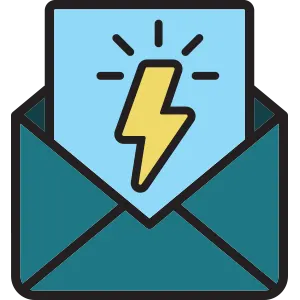
In the digital age, where our inboxes are constantly flooded with messages, email marketing remains a powerful and effective tool for nonprofit organizations to engage with their supporters, drive donations, and foster lasting relationships.
Let’s explore the world of email marketing for nonprofits, its benefits, and best practices to help organizations leverage this channel to its fullest potential.

The Power of Email Marketing for Nonprofits
Email marketing enables nonprofits to communicate directly with their audience, delivering personalized and targeted messages. It provides a cost-effective means to nurture relationships, share updates and success stories, drive donations, and mobilize supporters for action.
Here’s why email marketing should be an integral part of your nonprofit’s marketing strategy:
First of all, Email marketing enables personalized and targeted communication. It allows you to segment your audience based on interests, demographics, donation history, and engagement level. This segmentation enables personalized messaging, increasing the relevance and effectiveness of your communication.
Second, emails provide a direct line of communication, allowing nonprofits to build and nurture relationships with supporters. Through consistent and engaging content, you can foster a sense of community, trust, and loyalty.
Third, email campaigns can be designed specifically to drive donations and fundraising efforts. By crafting compelling stories, showcasing impact, and creating urgency, nonprofits can motivate supporters to contribute to their cause.
Furthermore, you can use email to keep your audience informed about the latest developments, events, and news related to your organization. Whether it’s sharing success stories, announcing upcoming initiatives, or providing important updates, email marketing ensures your supporters stay in the loop.
Lastly, email campaigns are an effective way to promote events, recruit volunteers, and drive attendance. With a well-crafted email, nonprofits can create excitement, highlight the benefits of participation, and provide clear calls-to-action.
To maximize the impact of your email marketing efforts, consider the following best practices:

Build a Quality Email List
Focus on growing an engaged and opt-in email subscriber list. This would mean knowing who your target audience is: their demographics, interests, their likes and dislikes. Offer valuable content incentives, such as ebooks, reports, or exclusive updates, to encourage sign-ups. Ensure compliance with data protection regulations and provide an easy way for subscribers to unsubscribe.

Segment and Personalize
Organize your email list based on relevant criteria such as interests, past actions, or donation history. Tailor your messages to resonate with each category of contacts, addressing their specific needs and interests. Personalization can significantly boost engagement and conversion rates.

Compelling Subject Lines and Preheader
Grab attention with concise and intriguing subject lines that entice recipients to open your emails. Complement them with engaging preheaders that provide a glimpse of the email’s content.

Engaging and Relevant Content
Craft compelling, concise, and visually appealing email content that aligns with your organization’s voice and brand. Whether you are sending out a newsletter to inform, educate or rally people, use storytelling techniques to evoke emotions, showcase impact, and clearly communicate the value of supporting your cause.

Clear Calls-to-Action (CTAs)
Every email should have a clear and prominent CTA that drives the desired action, whether it’s making a donation, registering for an event, or volunteering. Use persuasive language, urgency, and compelling visuals to encourage clicks and conversions.

Test and Optimize
Continuously test different elements of your email campaigns, including subject lines, content, layouts, and CTAs. Analyze key metrics such as open rates, click-through rates, and conversions to identify areas for improvement and optimize future campaigns.

Automation and Drip Campaigns
Implement email automation to nurture relationships and guide supporters through predefined journeys. Drip campaigns, triggered by specific actions or dates, can deliver targeted content at the right time, enhancing engagement and conversion rates.

Mobile Optimization
With the majority of emails now being opened on mobile devices, ensure your emails are mobile-friendly and responsive. Optimize the layout, font size, and images to provide a seamless experience across devices.
Email marketing continues to be a valuable asset for nonprofit organizations, enabling personalized communication, driving donations, and fostering lasting connections.
By following best practices such as list segmentation, personalization, compelling content, and clear CTAs, nonprofits can unlock the full potential of email marketing to engage supporters, mobilize action, and further their mission.
Do It Yourself
There are excellent websites on the internet where you can learn how to maximize email marketing for your nonprofit organization. Below are three examples:
- https://www.nptechforgood.com/101-best-practices/10-email-marketing-best-practices-for-nonprofits/
- https://www.wildapricot.com/blog/nonprofit-email-marketing
- https://www.funraise.org/blog/how-to-write-nonprofit-emails-that-actually-convert
Professional Reference
Most of the time, a professional email marketing specialist with years of experience is a better alternative to learning and doing email marketing yourself. Click Professional Referrals, complete the form, and we will have an experienced professional, at well below market rates contact you.

